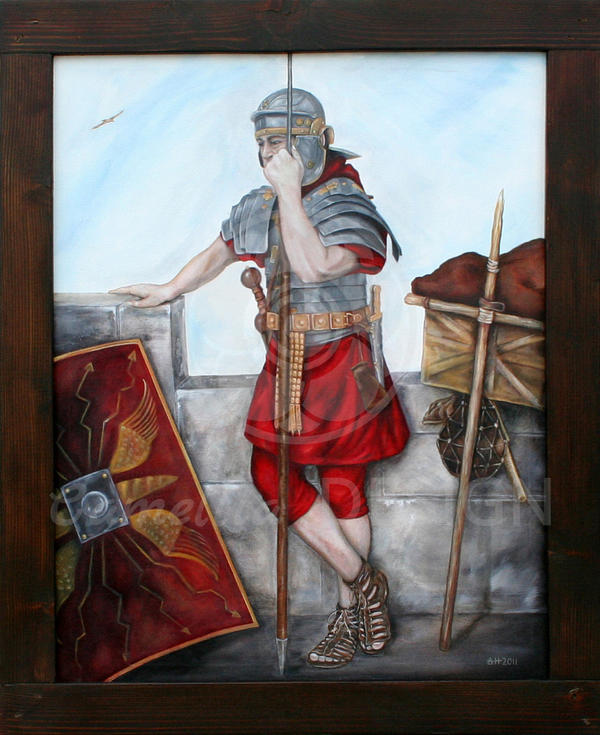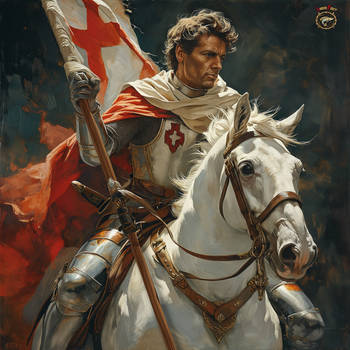Deviation Actions
Description
I CAME, I SAW, I CONNQUERED.
“Veni Vidi Vici”
JULIUS CAESAR, report of victory in 47 B.C over Pharnaces, king of Pontus.
The famous “Veni Vidi Vici” by Julius Caesar was the inspiration for this painting. For centuries, the roman legions were the backbone of roman rule, enforcing Roman law and establishing the ‘Pax Romana’ or Roman Peace, guarding against barbarian incursion and protecting its boarders.
This painting is interwoven with references and inferences. The points of interest are as follows:
The veteran legionary – I chose an older soldier to represent the dedication Rome expected from her Legionaries. He is stoically resigned to fulfilling his duty, tiered and weary from long years of service, yet he continues to stand oath bound and ready to guard the boarders of the Roman Empire.
The cross frame marching pack – The equipment is symbolic of the Legionary’s travels to many distant lands to enforce roman rule. The spare pair of sandals represents the many miles and journeys ahead of him while he serves.
The rectangular scutum or shield - The legionary’s shield defends Rome and Roman values.
The wall – The Roman wall signifies the boarders of Roman territory which the soldier charged to defend with his life. It is the boundary of civilisation, on the legionary’s side is Rome and the order of Roman rule, on the other side is the unknown and the chaos that is the barbarian world.
The Eagle – The eagle was the symbol of Rome and her legions. Here it flies high overhead with nothing escaping the keen eye of the bird’s attention, representing Rome’s authority over the land below.
SPQR wall inscription – Just above the shield SPQR is inscribed in to the stone. SPQR is an initialism of a Latin phrase ‘Senātus Populus que Rōmānus’ or ‘The Senate and People of Rome’ was the symbol of Roman authority and government.
CVI Wall inscription – AD 106 is graffitied into the top of the wall in Roman numerals, the year that Emperor Trajan conquered Dacia during the Hight of Rome’s imperial power. The authority of Rome during this period appeared absolute and indomitable.
The wooden Frame - The sawn Timber frame is held in position with Large nails reminiscent of the Roman variety. I wanted to allude to the engineering prowess of Roman siege equipment employed by the Legions.



































